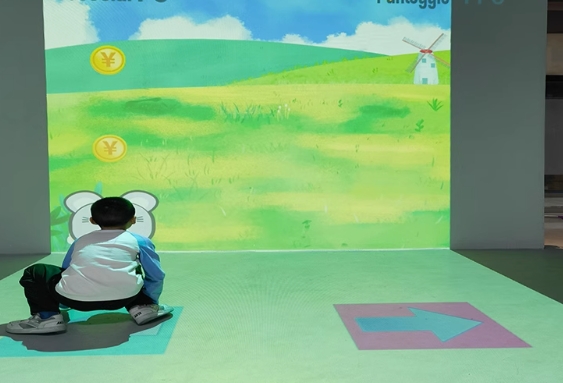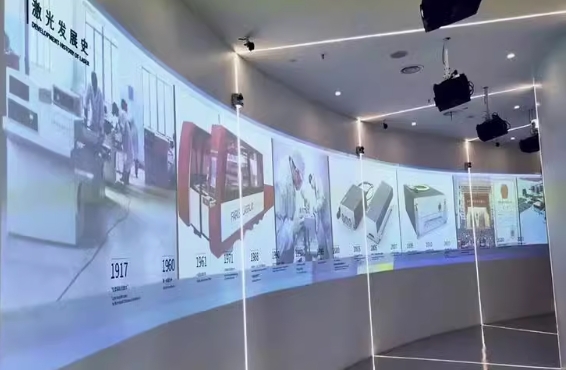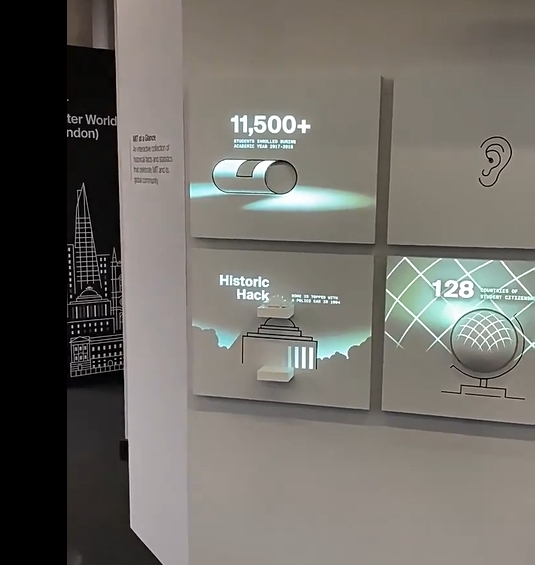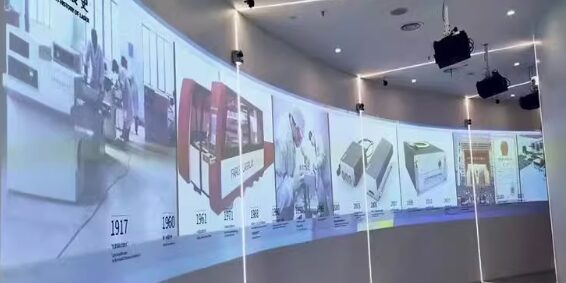Exhibitions have always been a powerful medium for storytelling, education, and brand promotion. However, in today’s fast-paced world, traditional static displays often struggle to capture and retain audience attention. Enter LiDAR interactive projection—a groundbreaking technology that is revolutionizing the exhibition industry. By combining LiDAR sensors with projection systems, this technology creates immersive, interactive, and unforgettable experiences for visitors. In this blog, we’ll explore how LiDAR interactive projection enhances exhibitions, its key benefits, and why it’s a must-have for modern exhibitors.

What is LiDAR Interactive Projection?
LiDAR (Light Detection and Ranging) interactive projection uses LiDAR sensors to detect and track movements, enabling real-time interaction with projected content. This technology transforms ordinary exhibitions into dynamic, engaging experiences where visitors can interact with displays through gestures, movements, or even touch. From museums to trade shows, LiDAR interactive projection is redefining how we experience exhibitions.
The Impact of LiDAR Interactive Projection in Exhibitions
1. Enhanced Interactivity
One of the most significant advantages of LiDAR interactive projection is its ability to foster real-time interaction:
- Gesture-Based Controls: Visitors can use hand gestures or body movements to control and manipulate projected content, creating a sense of agency and engagement.
- Customizable Experiences: Exhibitors can tailor interactive content to align with the exhibition’s theme, offering personalized experiences that resonate with diverse audiences.
2. Immersive Visual Experiences
LiDAR interactive projection brings exhibitions to life by creating immersive environments:
- Virtual Scenes: Projections can transform walls, floors, or screens into dynamic, lifelike scenes that transport visitors to another world.
- 3D Effects: Advanced projection techniques can add depth and dimension to displays, making them more visually captivating and memorable.
3. Educational Value
In educational and exhibitions, LiDAR interactive projection enhances learning through engagement:
- Interactive Games: Fun, interactive games can teach complex concepts in an accessible and enjoyable way, making learning more effective.
- Hands-On Exploration: Visitors can explore exhibits at their own pace, deepening their understanding and retention of information.
4. Increased Visitor Engagement
LiDAR interactive projection makes exhibitions more fun and engaging:
- Gamification: Incorporating games and challenges into exhibitions encourages participation and keeps visitors entertained.
- Novelty Factor: The innovative nature of LiDAR interactive projection attracts attention and leaves a lasting impression on visitors.

Why LiDAR Interactive Projection is a Game-Changer for Exhibitions
- Unmatched Interactivity: LiDAR technology enables seamless, real-time interaction, making exhibitions more engaging and memorable.
- Immersive Storytelling: By creating lifelike virtual environments, LiDAR interactive projection enhances the narrative power of exhibitions.
- Educational Impact: Interactive displays make learning more accessible and enjoyable, particularly in科普 and educational settings.
- Visitor Retention: The novelty and fun of interactive exhibits encourage visitors to spend more time exploring and engaging with the content.
Real-World Applications of LiDAR Interactive Projection in Exhibitions
1. Museums and Cultural Exhibitions
LiDAR interactive projection can bring historical artifacts and cultural stories to life, offering visitors a deeper connection to the exhibits. For example, a museum could use LiDAR to create an interactive timeline where visitors gesture to explore different historical periods.
2. Trade Shows and Corporate Exhibitions
At trade shows, LiDAR interactive projection can make corporate booths stand out. Brands can use interactive displays to showcase products, demonstrate features, or engage visitors with gamified experiences.
3. Science and Technology Exhibitions
In science museums, LiDAR interactive projection can explain complex concepts through hands-on experiments and interactive simulations, making learning fun and accessible for all ages.
4. Art Installations
Artists can use LiDAR interactive projection to create dynamic, interactive installations that respond to visitors’ movements, adding a new dimension to the art experience.

Conclusion
LiDAR interactive projection is transforming exhibitions into dynamic, interactive, and immersive experiences. By enhancing interactivity, visual appeal, and educational value, this technology is redefining how we engage with exhibitions. Whether it’s a museum, trade show, or art installation, LiDAR interactive projection offers endless possibilities for creating unforgettable experiences.
As the technology continues to evolve, we can expect even more innovative applications in the exhibition industry. Are you ready to elevate your next exhibition with LiDAR interactive projection? The future of exhibitions is here—and it’s interactive!
Keywords: LiDAR interactive projection, exhibitions, immersive experiences, interactive displays, gesture-based controls, educational exhibitions, trade shows, museums, art installations, visitor engagement, interactive technology, LiDAR applications, modern exhibitions, gamification, virtual environments.







